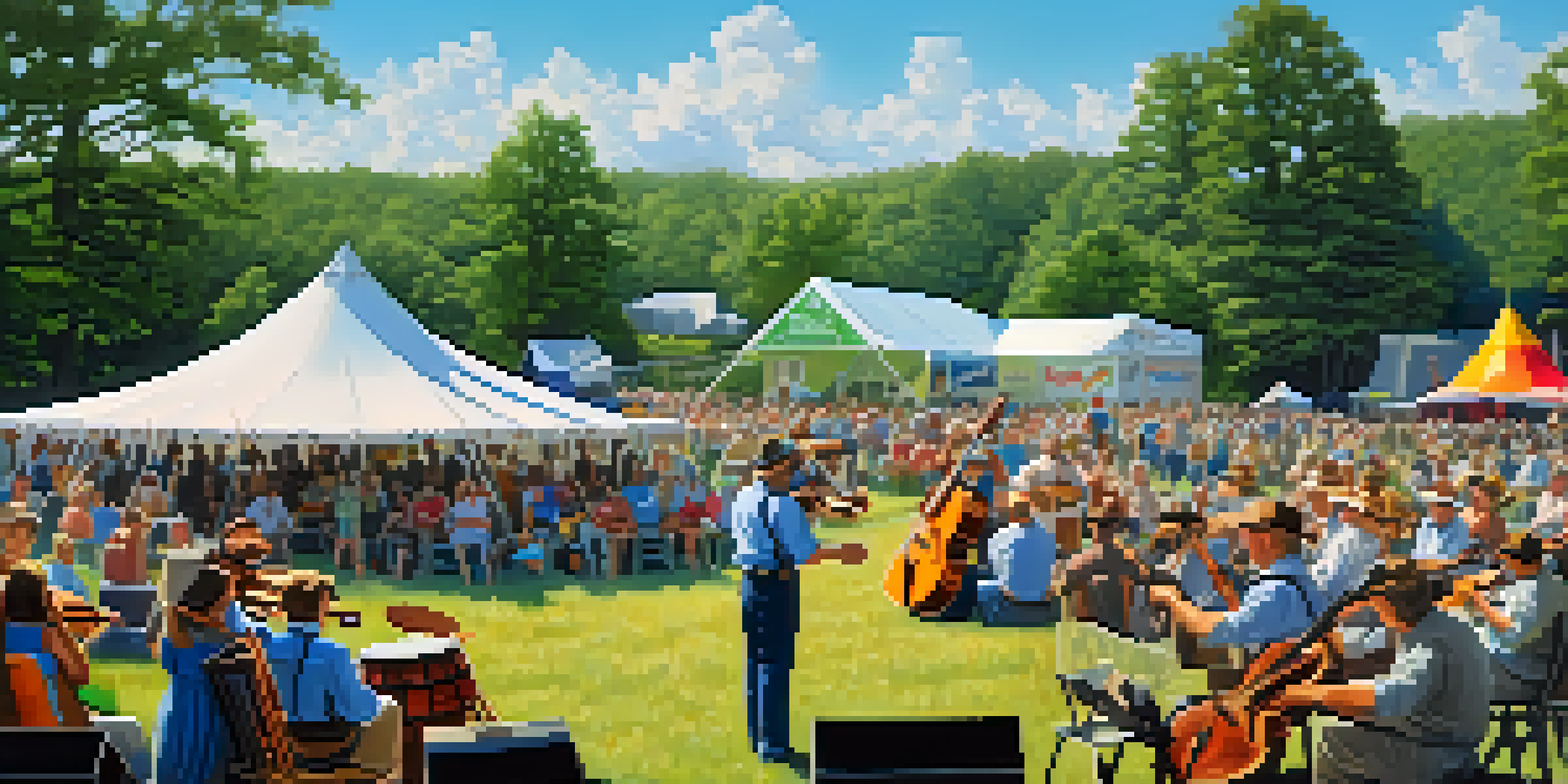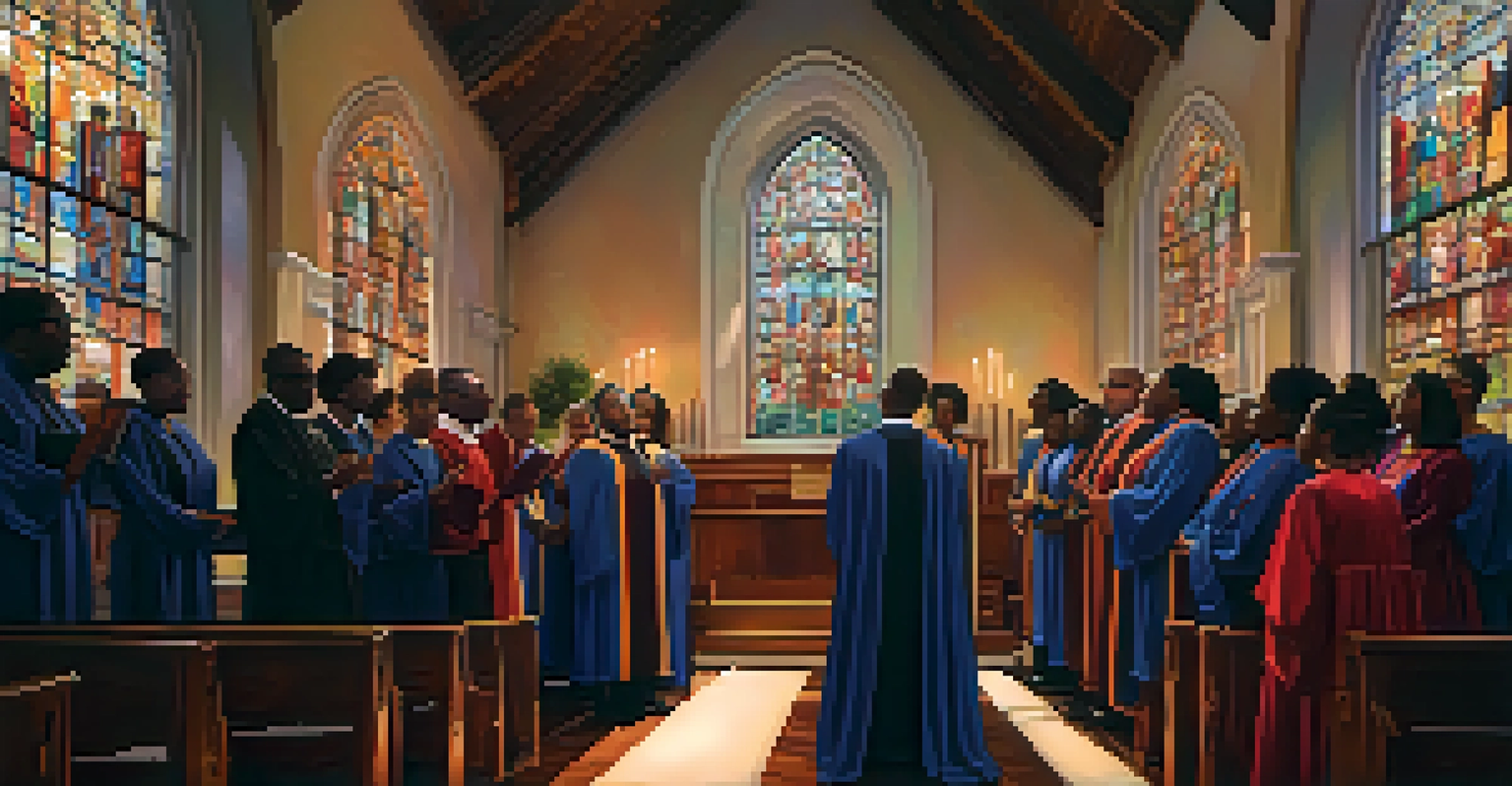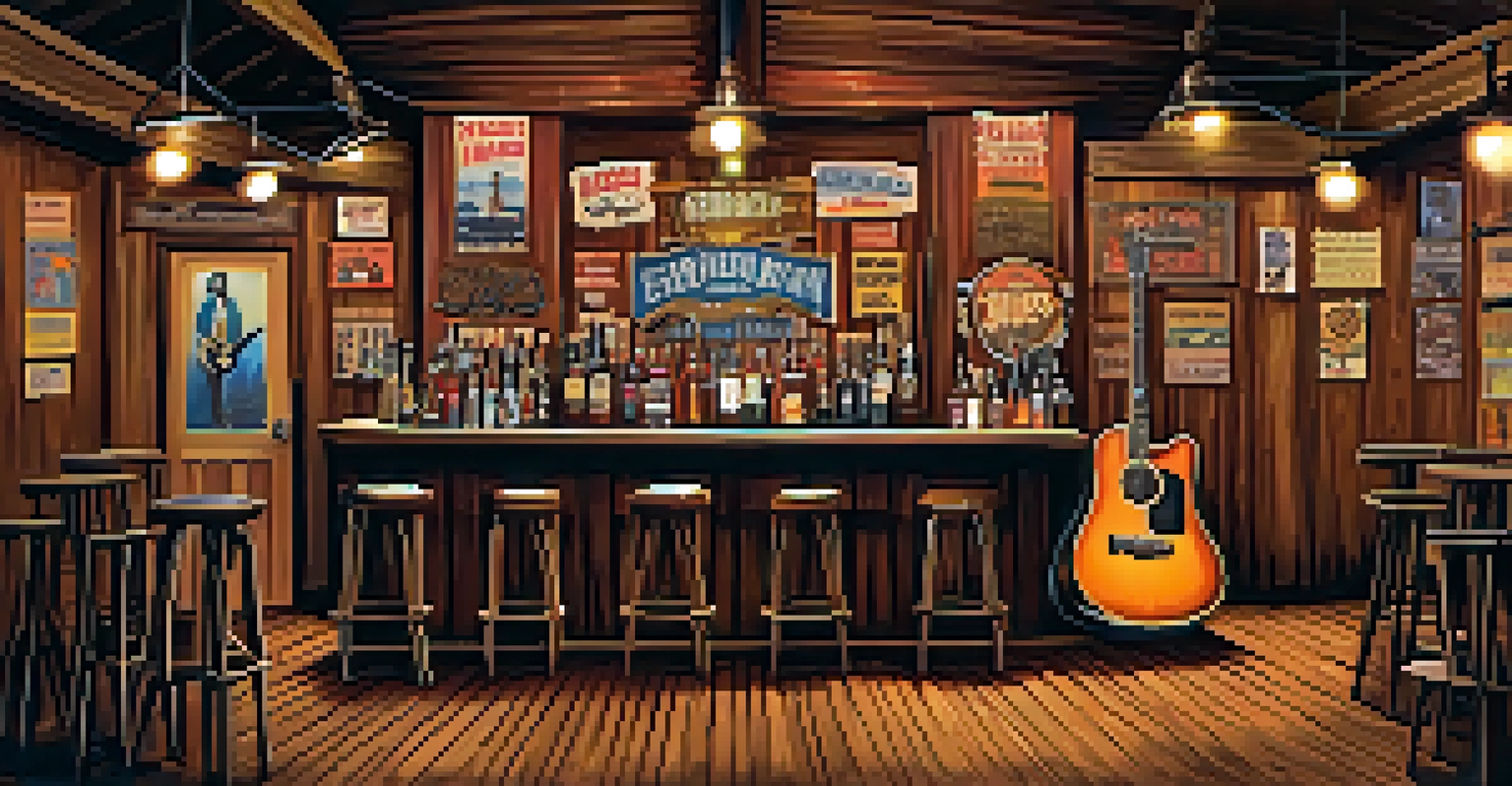The Evolution of Music in North Carolina: A Cultural Journey

The Roots: Indigenous Sounds and Early Influences
North Carolina's musical evolution begins with its Native American tribes, who used music for storytelling and rituals. Instruments like drums and flutes were integral to their cultural expressions, setting a foundation for future musical styles. As European settlers arrived, they brought their own traditions, blending them with indigenous sounds.
Music is the shorthand of emotion.
This early fusion of music laid the groundwork for what would become a rich tapestry of genres. Folk songs, ballads, and traditional dances emerged, reflecting the diverse backgrounds of the settlers. As communities formed, music became a vital part of social gatherings, helping to preserve and share cultural identities.
The melding of these diverse influences created a unique soundscape in North Carolina, one that would continue to evolve. These early musical expressions not only entertained but also served as a means of communication, bridging cultural divides and fostering a sense of community.
The Birth of Bluegrass: A New Sound Takes Shape
In the early 20th century, North Carolina played a pivotal role in the development of bluegrass music. Pioneered by artists like Bill Monroe, this genre blended elements of folk, jazz, and traditional Appalachian music. The high lonesome sound of the banjo and mandolin became a hallmark of bluegrass, captivating audiences across the nation.

Festivals began to pop up, celebrating this new genre and attracting musicians from all over. Events like the MerleFest in Wilkesboro showcased both established and emerging talent, solidifying North Carolina’s reputation as a bluegrass hub. This vibrant musical scene not only nurtured local artists but also drew national attention.
North Carolina's Musical Roots
The state's musical evolution began with indigenous sounds and European influences, creating a rich tapestry of genres.
Bluegrass music's rise in popularity highlighted the cultural significance of the genre, as it became a symbol of Appalachian identity. The storytelling aspect of bluegrass resonated deeply with listeners, reflecting the struggles and triumphs of everyday life. Through bluegrass, North Carolina contributed a significant chapter to America’s musical narrative.
The Influence of Gospel: Harmony and Hope
Gospel music has deep roots in North Carolina, evolving from spirituals sung by African American communities. With its powerful messages of hope and resilience, gospel became a unifying force, bringing people together in worship and celebration. Churches across the state became hotbeds for musical talent, producing renowned artists like The Gospelaires.
The beautiful thing about music is that it transcends language.
The rich harmonies and emotional delivery in gospel music influenced various genres, including soul and R&B. Many North Carolina musicians found their beginnings in church choirs, where they honed their vocal skills and developed a passion for performance. This connection to faith and community remains a hallmark of the state's musical identity.
Today, gospel continues to thrive in North Carolina, with numerous festivals and events celebrating this vibrant genre. The music not only uplifts spirits but also serves as a reminder of the state's rich cultural heritage. Through gospel, North Carolina showcases the enduring power of music to inspire and unite.
The Rise of Country: Honky-Tonk and Beyond
As the 20th century progressed, country music began to gain traction in North Carolina, influenced by the sounds of neighboring Tennessee. Honky-tonk bars became popular venues where local artists could perform and connect with audiences. This genre's storytelling tradition resonated with many, reflecting the lives and experiences of the people.
Artists like Doc Watson and the Carolina Chocolate Drops helped popularize country music in the region, blending traditional elements with contemporary styles. Their innovative sounds attracted both local and national attention, further establishing North Carolina as a key player in the country music scene. The state became known for its rich musical talent and diverse influences.
Bluegrass and Country's Rise
North Carolina became a pivotal hub for bluegrass and country music, fostering local talent and attracting national attention.
Today, country music in North Carolina continues to evolve, with artists exploring new sounds while staying true to their roots. Festivals like the North Carolina Bluegrass Festival celebrate this rich tradition and attract fans from all over. The genre's adaptability ensures that it remains an integral part of the state's cultural landscape.
The Legacy of Jazz: A Rhythmic Transformation
Jazz music made its mark in North Carolina during the early 20th century, bringing a vibrant energy to the state's musical scene. Cities like Charlotte and Durham became hubs for jazz clubs, where local musicians could showcase their talents. The improvisational nature of jazz offered a fresh perspective on musical expression, attracting diverse audiences.
Notable figures such as Thelonious Monk, who was born in North Carolina, contributed significantly to the jazz world. His innovative style and complex compositions helped shape modern jazz, influencing generations of musicians. The state’s rich jazz history reflects its broader cultural evolution, showcasing the importance of artistic exploration.
Today, jazz festivals and events celebrate this legacy, allowing new artists to emerge while paying homage to the past. North Carolina’s jazz scene continues to thrive, blending traditional elements with contemporary influences. The rhythm and creativity of jazz remain a testament to the state’s dynamic musical journey.
The Impact of Hip-Hop: A Cultural Revolution
In recent decades, hip-hop has emerged as a powerful force in North Carolina’s music landscape. Artists like J. Cole and Little Brother have brought national attention to the state, showcasing its unique voice within the genre. Hip-hop culture, with its emphasis on storytelling and social commentary, resonates deeply with North Carolinians.
The rise of hip-hop has fostered a sense of community, inspiring local artists to collaborate and innovate. Events like the North Carolina Hip-Hop Festival highlight the creativity and talent within the state, providing a platform for emerging voices. This cultural revolution reflects the diverse experiences and perspectives of North Carolina’s residents.
Hip-Hop's Cultural Impact
In recent decades, hip-hop has emerged as a powerful force in North Carolina, highlighting storytelling and social commentary.
As hip-hop continues to evolve, it remains a crucial part of the state’s musical identity. The genre’s ability to address social issues and inspire change resonates with audiences, making it a powerful tool for expression. North Carolina’s hip-hop scene is a testament to the enduring legacy of music as a means of storytelling and connection.
Folk and Americana: A Return to Roots
Folk and Americana music have seen a resurgence in North Carolina, as artists seek to reconnect with their roots. This genre draws heavily from traditional sounds, incorporating elements of bluegrass, country, and even gospel. Festivals celebrating folk music have gained popularity, attracting audiences eager to experience authentic musical storytelling.
Musicians like Mandolin Orange and The Avett Brothers have emerged from North Carolina, blending contemporary influences with classic folk traditions. Their lyrics often reflect personal narratives and regional experiences, resonating with listeners on a profound level. This revival highlights the importance of preserving cultural heritage while embracing modernity.

The folk and Americana scene serves as a reminder of the power of music to evoke nostalgia and foster community. As artists continue to explore their roots, North Carolina remains a vibrant hub for this genre. The embrace of folk music underscores the enduring connection between past and present in the state’s cultural journey.